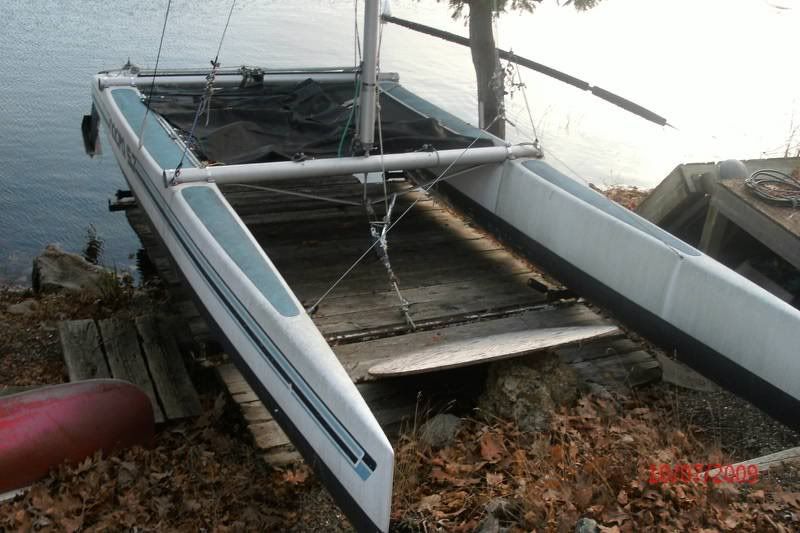I'm hoping you can give me some advice on moving it home. It's in a bitch of a location, pulled up on a narrow angled ramp with the rudders just out over the water, between trees. Not tall enough trees to be useful in getting the mast down, just tall enough to be a pain. I'm very leery of trying to sail it around the point/across bay to the nearest launch. My two choices are rig an electric trolling motor & drive it around, or disassemble it & carry the pieces up a stairway (50' ish). I am mechanically minded, with color coded tape, pictures, manuals, & help from here I'm confident of getting it put back together next spring. Takedown also means I can get it in the garage alongside the power boats & other sailboat.
Either way, the mast has to come down. I will have two fit helpers, looking for advice on the best/safest method. Can 3 adults walk it down the tramp? I think I read in some other posts here about having to turn it 90* I can visualize the oval cross section resulting in the rear edge binding on the cross beam & bending something if it is lowered while lined up parallel to the hulls. Do we just turn it 90* to the hulls & lower? What order to undo rigging? Is there value in using a long pole with a "U" at the end to "catch the mast say 12' up as it comes down? Ideas on having 1 person hold lines and/or trapeze wires from the front of the boat?
I really don't want to break anything, or worse injure someone, but I need to get this moved Fri/Sat. The window before winter strikes is getting pretty small up here, & I don't want to leave it sit on the shore all winter. Maybe I should have bought a waterfront place in Florida????
edited by: Edchris177, Dec 02, 2009 - 01:06 PM





